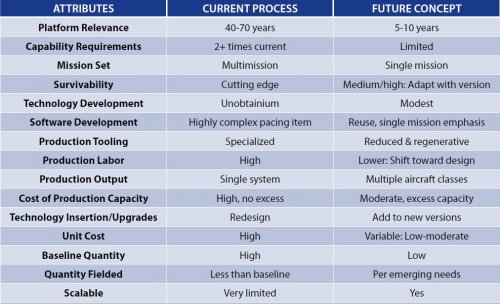Government and industry (with very rare exceptions) have become extremely risk-averse, not just to life-safety issues (which is understandable) but to financial, technical, political, and image/PR as well. You wind up with expectations like:
- Costs are expected to be perfectly predicted years in advance.
- New products are expected come off the line in production-ready configuration, with no modification required.
- Everything is expected to work perfectly the very first time it's ever turned on.
- We use computers to design things, so we shouldn't have mistakes.
- Program schedules are defined assuming the above are true.
Programs aren't allowed to really get going until you have all the paperwork to prove the above items. Of course, anyone who has actually worked on programs like these knows better--things aren't going to work the first time, you will have changes, there will be unexpected delays, and so on. But politicians and the general public don't understand that (or willfully ignore it, if it suits their needs).
Of course, this results in everyone panicking over things that (to the knowledgable ones) are minor or expected issues.
Start going over budget? Well, time to cancel the project and start all over on a new one. Obviously that one won't go over budget. And when it does, cancel it and (maybe?) start over on a third. That's what we've been doing with reusable launch vehicle development post-Shuttle; I'm willint to bet that if we'd just committed all the money we've spent on making generation after generation of powerpoint spacecraft to actually building, testing, and debugging a single design, we'd have flying hardware.
Item fails the first time it's ever tried (or even in the first few tries)? Obviously the concept will never work and it was flawed from the beginning. We should cancel it and write it off forever, because if an all-up test doesn't work the first time it's tried, it never will.
Experience a routine or common failure in testing? The engineers are incompetent and the project is irrepairably broken--time to cancel it. Look at the flack Lockheed catches every time they find a crack on the F-35 fatigue test articles. Cracks are found on every fatigue test article ever made. If you don't find any it's time to worry--either you really overdesigned the airplane, or (more likely) you've set your test up wrong or aren't looking hard enough. But these faults are trumpeted in the press as critical flaws that could bring the entire program crashing to a halt.
And God forbid that your paperwork isn't in order. If you're working a government program, a staggering amount of time and money is spent to comply with non-technical government requirements and audits designed to esnure every penny is accounted for and that all the political mandates are followed to the letter. Certifying anything with the FAA basically requires you to duplicate everything you already do (tests, configuration tracking, etc.) all over again, in a format unique to the FAA. There are some cases where a tremendous amount of paperwork is required to "prove" that a given item or system will function as required and that the design is correct before it can be tested for credit, even when the test itself is low-risk and can easily be conducted to show compliance, because it's the paperwork that matters, not the actual performance.

